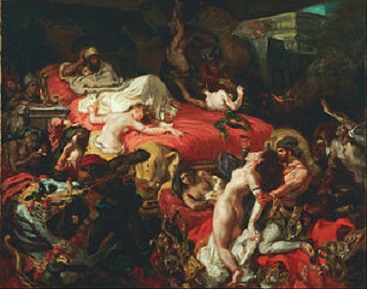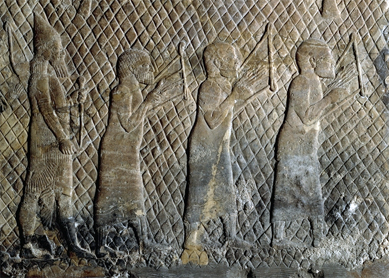“This is the city.” The popular 1960s television crime drama Dragnet began every episode with these words. The city—in this case, Los Angeles—embodied the best and worst of human life: the mundane, dramatic, and tragic. So it has always been. Cities are morally ambivalent places that hold out the promise of excitement and the threat of danger, at once sites of corruption and of great human achievements. In the Bible, the first murderer, Cain, is also the builder of the first city (
Nineveh is one of the most prominent foreign cities in the Hebrew Bible. Its portrayal is a complex blend of historical reality, symbolic force, and legendary embellishment.
The historical Nineveh was the capital of the neo-Assyrian empire in the late seventh century B.C.E. There was no love lost between the ancient Israelites and Nineveh. The city’s king, Sennacherib, laid siege to Jerusalem in 701 B.C.E. (
The other biblical depiction of Nineveh is in the book of Jonah. There, Nineveh is described as huge—taking three days to walk across—and thoroughly evil. But Jonah gives no specifics about the city’s evil beyond the king’s command that citizens turn away “from the violence that is in their hands” (
Jonah’s Nineveh is thematically connected to Sodom, another biblical city of evil (
Outside of the Bible, Nineveh was known for having been a great, lawless, and ruined city. Greek literary giants like Herodotus and Aristotle catalog its sinfulness, describing Sardanapalus, its legendary last king, in unflattering (and problematic) terms. Diodorus of Sicily (first century B.C.E) describes Sardanapalus’ violations of the rigid gender boundaries of Greco-Roman antiquity. According to legend, his subjects rebelled against his taboo behaviors, whereupon the king piled his wealth into a mountain, climbed atop it with his eunuchs and concubines, and torched it all with a fire that burned his palace to the ground.
Readers also added detail to Jonah’s vague depiction of Nineveh. The 1589 morality play by Thomas Lodge and Robert Greene, A Looking Glass for London and England, retells the book of Jonah with a lengthy description of Nineveh’s sinfulness, complete with evil kings, usurers, demons, murderers, and forced incest.
Nineveh is a metaphor for the ambiguity of all cities. It is a screen onto which readers project their own values in order to reaffirm them. It is a mirror that reflects back readers’ faults and offers them a moral lesson.
Bibliography
- Sherwood, Yvonne. A Biblical Text and Its Afterlives: The Survival of Jonah in Western Culture. Cambridge, U.K.: Cambridge University Press, 2001.
- Bolin, Thomas. “‘Should I Not Also Pity Nineveh?’ Divine Freedom in the Book of Jonah,” Pages 109-20 in Journal for the Study of the Old Testament 67 (1995).



